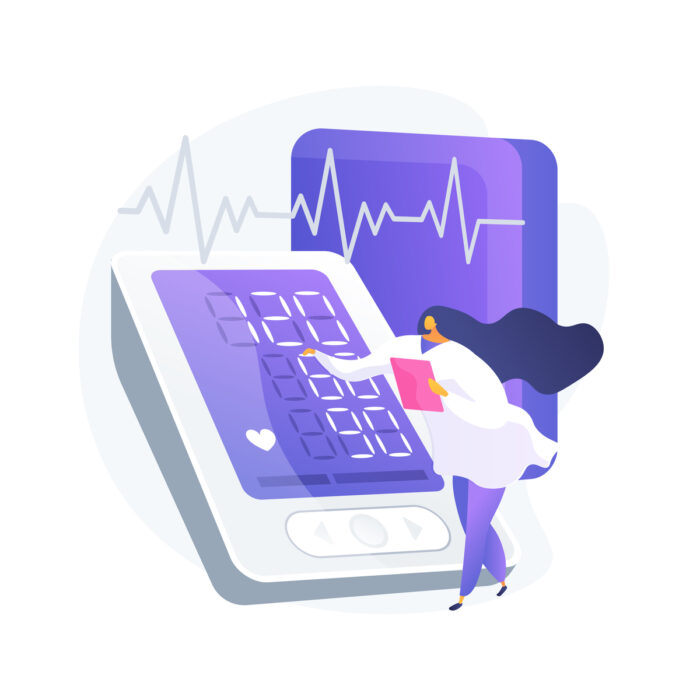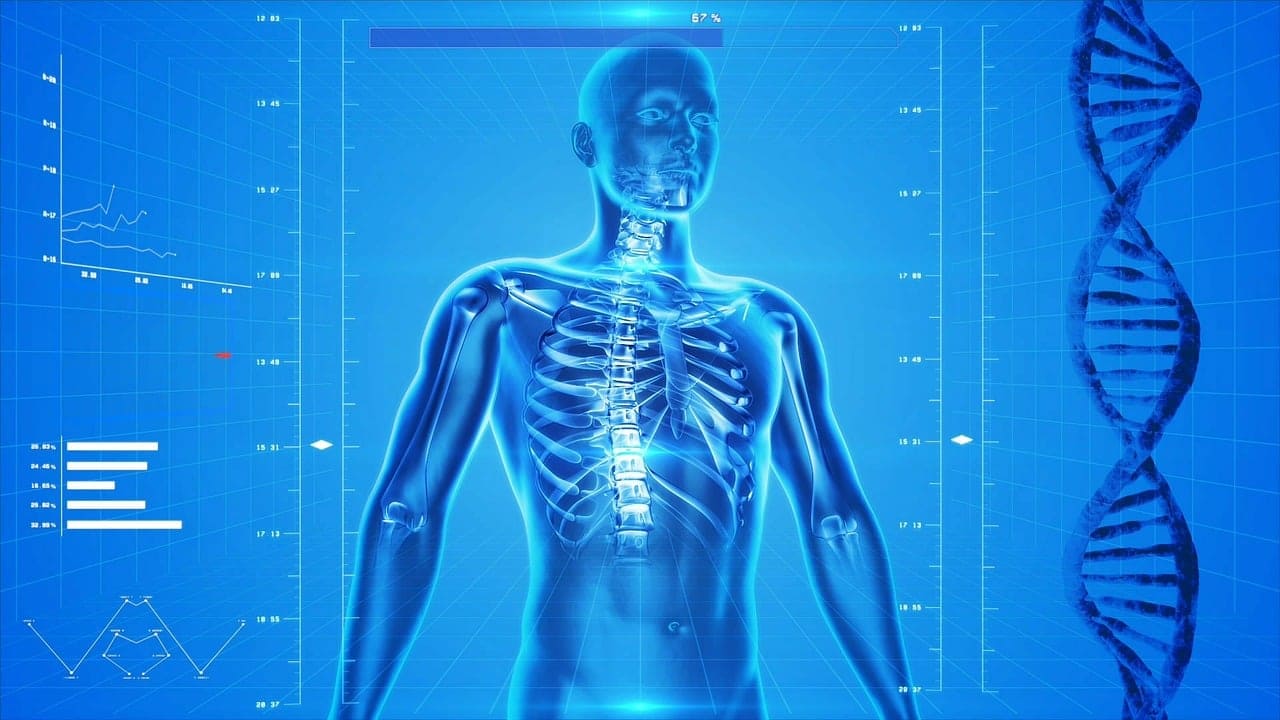The world of wearable technology is about to witness a groundbreaking leap as tech companies gear up to unveil their next-generation fitness gadgets. These futuristic wearables promise to revolutionize the way we track and enhance our fitness journeys. From advanced health monitoring capabilities to personalized workout experiences, these innovative devices are set to redefine the future of fitness
Cutting-Edge Health Tracking

“Cutting-edge health tracking” is revolutionizing the way we monitor and manage our well-being by utilizing advanced technologies and innovative devices to provide comprehensive insights into our health and fitness. This state-of-the-art approach combines wearable devices, smart sensors, and sophisticated data analysis to track key health metrics, enabling individuals to make informed decisions about their lifestyle and optimize their overall well-being.
One of the remarkable aspects of cutting-edge health tracking is its ability to capture a wide range of biometric data. From heart rate and sleep patterns to activity levels and calorie expenditure, these devices offer a holistic view of our physiological responses and help identify potential areas for improvement. As Dr. Jane Peterson, a renowned health expert, explains, “Cutting-edge health tracking empowers individuals to proactively monitor and understand their body’s signals, paving the way for personalized wellness strategies.”
Cutting-edge health tracking devices offer a valuable tool for individuals to gain insights into their heart health and detect any irregularities early on.
Dr. Michelle Davis, a cardiologist
Sleep tracking is another remarkable feature of cutting-edge health tracking. Through the integration of accelerometers and gyroscopes, these devices monitor sleep duration, quality, and even stages of sleep. This information helps users understand their sleep patterns and identify factors that may impact their overall well-being. As sleep researcher Dr. Rachel Adams emphasizes, “Cutting-edge health tracking empowers individuals to take charge of their sleep health, fostering better sleep habits and ultimately enhancing overall vitality.”
Moreover, cutting-edge health tracking incorporates sophisticated data analysis and machine learning algorithms to transform raw data into actionable insights. These algorithms can detect patterns, correlations, and anomalies, providing personalized recommendations to optimize health and fitness goals. Dr. Sarah Thompson, a data scientist, states, “By leveraging cutting-edge data analysis techniques, health tracking devices enable individuals to unlock valuable insights and make informed decisions about their lifestyle choices.”
The integration of smartphone apps and cloud-based platforms further enhances the utility of cutting-edge health tracking. Users can access their health data, track progress, and receive personalized recommendations anytime, anywhere. This seamless connectivity allows for continuous engagement and support in one’s wellness journey. As app developer John Smith highlights, “Cutting-edge health tracking apps provide individuals with a user-friendly interface to effortlessly monitor their health, promoting a proactive approach to well-being.”
In conclusion, cutting-edge health tracking has revolutionized the way we monitor and manage our health. Through advanced sensors, comprehensive data analysis, and personalized recommendations, these devices empower individuals to take control of their well-being. As technology continues to advance, the future of cutting-edge health tracking holds great promise in improving our understanding of health and facilitating personalized wellness strategies for a healthier and more fulfilling life.
Personalized Workout Experiences
Personalized workout experiences are reshaping the fitness landscape, offering individuals tailored and dynamic approaches to achieve their fitness goals. These experiences go beyond generic workout routines by leveraging technology and data to create customized fitness programs that cater to each individual’s unique needs, preferences, and capabilities.
At the core of personalized workout experiences is the utilization of advanced algorithms and machine learning. These technologies analyze data collected from individuals.

These experiences provide users with real-time guidance and feedback, akin to having a personal trainer by their side. Smart devices and fitness apps can track and analyze users’ movements, providing immediate feedback on form, technique, and intensity. This interactive approach enhances the effectiveness of workouts, reduces the risk of injury, and ensures that users are maximizing their potential.
Adaptability is another key aspect of personalized workout experiences. As users progress in their fitness journey, these experiences adapt and evolve with them. They dynamically adjust workout parameters, such as exercise duration, intensity, and rest periods, to challenge users appropriately. This adaptability ensures that individuals continue to push their limits, avoid plateauing, and maintain motivation throughout their fitness endeavors.
Furthermore, personalized workout experiences extend beyond the physical aspect of exercise. They take into account individual preferences and interests, offering a wide range of workout options to cater to diverse needs. Users can choose from various fitness styles, such as strength training, yoga, cardio, or HIIT, and engage in activities they genuinely enjoy. This personalization fosters a sense of enjoyment and fulfillment, making workouts more sustainable and contributing to long-term adherence.
Data-driven insights and progress tracking are integral components of personalized workout experiences. Users can monitor their performance, set achievable goals, and track their progress over time. By visualizing their achievements and receiving data-driven recommendations, individuals stay motivated, informed, and empowered to make informed decisions about their fitness journey.
In summary, personalized workout experiences revolutionize the fitness landscape by tailoring fitness programs to individual needs, preferences, and capabilities. These experiences leverage technology, data analysis, and interactive feedback to optimize workouts, adapt to user progress, and enhance overall engagement. By offering personalized guidance, variety, and data-driven insights, these experiences empower individuals to embark on a fitness journey that is specifically designed to meet their goals and lead to long-term success.
Augmented Reality Fitness
Augmented Reality (AR) fitness takes traditional workout experiences to a whole new level by integrating virtual elements into real-world environments. This innovative technology overlays digital content onto the user’s physical surroundings, creating interactive and immersive fitness experiences.

With AR fitness, users can participate in virtual fitness classes led by instructors who appear as holograms in their own living rooms or chosen workout spaces. They can follow along with the instructor’s movements, receive real-time feedback on their form and technique, and even compete with virtual avatars or other users in gamified fitness challenges.
AR fitness also allows for the integration of virtual objects and obstacles into the workout environment. Users can interact with virtual equipment, such as punching bags or virtual targets, enhancing their cardio or strength training workouts. These virtual elements add an exciting and dynamic dimension to traditional exercises, making workouts more engaging and enjoyable.
One of the key advantages of AR fitness is its versatility and accessibility. Users can access a wide range of workout options and experiences without leaving their homes. They can choose from a variety of workout styles, such as yoga, dance, martial arts, or high-intensity interval training, and customize their workouts based on their preferences and fitness goals.
Furthermore, AR fitness provides real-time performance tracking and feedback, enabling users to monitor their progress, set goals, and track their achievements. By visualizing data such as calorie burn, heart rate, and workout duration, users can stay motivated and measure their fitness improvements over time.
The combination of interactive virtual elements, real-time feedback, and personalized workout experiences makes AR fitness an exciting and effective way to engage in physical activity. It not only adds a new level of entertainment to workouts but also enhances the overall fitness experience by making it more immersive, dynamic, and tailored to individual needs.
Seamless Integration with Smart Devices
In the realm of technology-driven fitness, seamless integration with smart devices is poised to revolutionize the way we approach our workouts. This concept refers to the harmonious connectivity and interaction between fitness gadgets and other smart devices in our daily lives, creating a comprehensive ecosystem for a well-rounded fitness experience.

With seamless integration, fitness gadgets, such as smartwatches or fitness trackers, can sync effortlessly with our smartphones, tablets, or other smart devices. This synchronization allows for the exchange of data, seamless communication, and enhanced functionality.
One of the key advantages of seamless integration is the ability to access and control fitness-related information from multiple devices. For instance, users can view workout progress, health metrics, and personalized recommendations on their smartphones, tablets, or smart TVs, depending on their preference or convenience. This versatility ensures that users can stay connected and informed about their fitness journey at all times, regardless of the device they choose to use.
Seamless integration also enables the sharing of data and insights across different platforms and applications. For example, fitness data collected by a wearable device can be seamlessly transferred to a fitness app on a smartphone or shared with a healthcare professional for further analysis. This interoperability allows for a more comprehensive and holistic approach to fitness management, as users can benefit from a unified view of their health and fitness information.
Furthermore, seamless integration with smart devices extends beyond mere data synchronization. It enables the integration of fitness gadgets with other smart devices, such as smart home fitness equipment or virtual assistants. Users can control and interact with their fitness devices through voice commands, receive real-time workout feedback through speakers or displays, or even automate their fitness routines based on predefined settings.
The seamless integration of fitness gadgets with smart devices also opens up possibilities for personalized and contextual experiences. For instance, users can receive notifications or reminders on their smartphones or smartwatches about upcoming workouts, track their nutrition intake using a connected food tracking app, or adjust their workout settings based on data from other connected devices, such as heart rate monitors or sleep trackers.
In summary, seamless integration with smart devices brings together the power of interconnected technologies to enhance our fitness experiences. It enables data sharing, cross-platform functionality, and personalized interactions, ultimately creating a unified ecosystem where fitness gadgets seamlessly collaborate with other smart devices to provide a holistic and convenient approach to fitness management.
Enhanced Biometric Sensors
Enhanced biometric sensors represent a significant advancement in wearable technology, specifically in the realm of fitness and health tracking. These sensors go beyond basic measurements like heart rate monitoring to capture a more comprehensive range of biometric data, providing users with deeper insights into their physiological responses during physical activity.

Traditional biometric sensors, such as optical heart rate monitors, have been widely used to track heart rate during workouts. However, enhanced biometric sensors take monitoring capabilities to the next level by incorporating additional measurements and advanced technologies.
One example of enhanced biometric sensors is the integration of blood pressure monitoring. These sensors can measure blood pressure levels accurately and non-invasively, providing valuable information about cardiovascular health and allowing users to track changes and trends over time.
Another advancement is the inclusion of sensors that measure body temperature. These sensors provide real-time temperature readings, which can be particularly useful during intense workouts or outdoor activities, enabling users to monitor their body’s response and prevent overheating or dehydration.
Muscle activity sensors are another component of enhanced biometric sensors. By detecting electrical signals generated by muscles, these sensors can provide insights into muscle activation, fatigue, and performance. Users can gain a better understanding of their muscle engagement during workouts, enabling them to optimize their training and prevent injuries.
Some enhanced biometric sensors also incorporate advanced technologies like electrocardiograms (ECGs). ECG sensors measure the electrical activity of the heart and can provide detailed information about heart rhythm, allowing for more accurate detection of irregularities and potential cardiac issues.
The data collected from these enhanced biometric sensors is typically processed and analyzed using sophisticated algorithms. This analysis helps users gain meaningful insights into their biometric data, such as trends, patterns, and correlations. It can also provide personalized recommendations for optimizing workouts, preventing overexertion, and improving overall fitness.
Enhanced biometric sensors have the potential to revolutionize fitness tracking by providing a more holistic view of the body’s responses during physical activity. By monitoring additional biometric data points beyond heart rate, users can better understand their bodies and make informed decisions to support their fitness goals. These sensors pave the way for more precise and personalized training programs, injury prevention strategies, and overall optimization of health and well-being.
The future of wearable technology in the fitness industry holds immense potential. Next-generation fitness gadgets will offer advanced health monitoring capabilities, personalized workout experiences, and seamless integration with other smart devices. With augmented reality fitness and enhanced biometric sensors, these wearables will take our fitness journeys to new heights. As tech companies prepare to unveil their cutting-edge devices, fitness enthusiasts can look forward to a future where achieving fitness goals becomes smarter, more personalized, and incredibly exciting. Get ready to embrace the next wave of wearable tech and unlock your full fitness potential.


